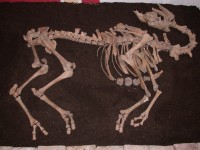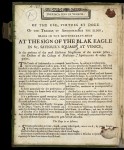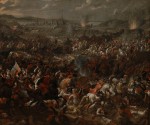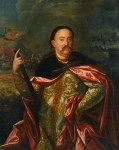 In 2006, archaeologists excavating a site of a future shopping center in the town of Tulln on the Danube in Lower Austria discovered the skeleton of a large mammal. The location once boasted a tavern named “Auf der Rossmühle” (On the Mill) and it was in what would have been the tavern’s cellar that they found the skeleton. At first they thought it was a bovine or a very large horse, but archaeozoologist Dr. Alfred Galik identified it as a camel.
In 2006, archaeologists excavating a site of a future shopping center in the town of Tulln on the Danube in Lower Austria discovered the skeleton of a large mammal. The location once boasted a tavern named “Auf der Rossmühle” (On the Mill) and it was in what would have been the tavern’s cellar that they found the skeleton. At first they thought it was a bovine or a very large horse, but archaeozoologist Dr. Alfred Galik identified it as a camel.
Testing of both the mitochondrial DNA and the nuclear DNA confirmed the morphological evidence that the animal was a hybrid of a dromedary mother and a Bactrian camel father. Its teeth and bones indicate the animal was an adult male, probably gelded, older than seven years. Lesions on the mandible show the camel was accustomed to wearing a harness and lesions on the shoulder blades were likely caused by the animal being made to rise and sit frequently to allow riders to mount and dismount. These are relatively minor repetitive stress deformities. Had the lad been used as a beast of burden, there would be significantly more damage to the bones. He was also fairly slender, so not ideally suited to bearing heavy loads but well suited as a riding animal. There are no signs of abuse or malnutrition. This guy was treated well.
 Researchers were able to date the animal with some precision to the second half of the 17th century thanks to artifacts found buried in the backfill with the remains. A Rechenpfenning, a coin or token used for math calculations rather than legal tender, bearing the face of King Louis XIV dates to between 1643 and 1715. A lead bottle containing the cure-all theriac (I don’t think this one is going to get revived any time soon) labeled with the name of a Vienna apothecary’s shop placed it squarely in the 17th century as “Apotheke zur Goldenen Krone” was in business between 1628 and 1665. Documentary evidence found that the the property changed hands in 1690 which is doubtless when the cellar was backfilled for new construction above it.
Researchers were able to date the animal with some precision to the second half of the 17th century thanks to artifacts found buried in the backfill with the remains. A Rechenpfenning, a coin or token used for math calculations rather than legal tender, bearing the face of King Louis XIV dates to between 1643 and 1715. A lead bottle containing the cure-all theriac (I don’t think this one is going to get revived any time soon) labeled with the name of a Vienna apothecary’s shop placed it squarely in the 17th century as “Apotheke zur Goldenen Krone” was in business between 1628 and 1665. Documentary evidence found that the the property changed hands in 1690 which is doubtless when the cellar was backfilled for new construction above it.
 While camel remains ranging in date from the Roman to the early modern era have been discovered before in Central Europe, they were disarticulated bones or partial skeletons at best. This is the first complete camel skeleton found and the timing makes it all the more intriguing because the late 17th century saw the final culmination of three centuries of war between Habsburg Austria and the Ottoman Empire where the camels came from. The overwhelming victory of the allied European powers at the Battle of Vienna in September of 1683 marked the turning point. Fighting continued until the Treaty of Karlowitz was signed in 1699, but the Ottoman forces were on the defensive the entire time and ultimately lost Hungary and Transylvania for good.
While camel remains ranging in date from the Roman to the early modern era have been discovered before in Central Europe, they were disarticulated bones or partial skeletons at best. This is the first complete camel skeleton found and the timing makes it all the more intriguing because the late 17th century saw the final culmination of three centuries of war between Habsburg Austria and the Ottoman Empire where the camels came from. The overwhelming victory of the allied European powers at the Battle of Vienna in September of 1683 marked the turning point. Fighting continued until the Treaty of Karlowitz was signed in 1699, but the Ottoman forces were on the defensive the entire time and ultimately lost Hungary and Transylvania for good.
 One of the leaders of the Holy League alliance, King of Poland John III Sobieski, who famously led the largest cavalry charge in history (18,000 horsemen) to inflict the coup de grace on the struggling Ottomans at the Battle of Vienna, wrote to his wife afterwards:
One of the leaders of the Holy League alliance, King of Poland John III Sobieski, who famously led the largest cavalry charge in history (18,000 horsemen) to inflict the coup de grace on the struggling Ottomans at the Battle of Vienna, wrote to his wife afterwards:
God and our Lord forever blessed be, He gave victory and glory to our people as the past centuries never knew before. All over the camp, countless riches fall into our hands. The enemy, their dead littering fields and the camp, flees in confusion. Camels, mules, cattle, sheep, which it had on the sides, our troops now take….
Tulln is just 25 miles northwest of Vienna. It was the staging ground where the allied troops met before the Battle of Vienna. Perhaps this camel made his way to the city as part of the spoils King John III Sobieski mentioned, or it may have been part of a peaceable exchange earlier that summer. Ottoman troops occupied the countryside around Tulln in August of 1683 but never conquered the town. Diplomatic channels were open since the Holy Roman Emperor’s ambassador and his secretary were released to Tulln by the Ottomans at that time.
 We know it wasn’t still in Ottoman hands when it died, because they would have butchered it (which is part of the reason why there are so few complete camel remains found in Europe). There are no cut marks on the bone and the position of the articulated skeleton means it was buried intact. Researchers believe the camel may have been kept as an exotic animal exhibit in Tulln. With little experience in the care and feeding of camels and limited resources in a time of war, the locals probably wouldn’t have been ideal zookeepers. When the camel died a few years later, it was put in the cellar with a bunch of trash and covered by the backfill.
We know it wasn’t still in Ottoman hands when it died, because they would have butchered it (which is part of the reason why there are so few complete camel remains found in Europe). There are no cut marks on the bone and the position of the articulated skeleton means it was buried intact. Researchers believe the camel may have been kept as an exotic animal exhibit in Tulln. With little experience in the care and feeding of camels and limited resources in a time of war, the locals probably wouldn’t have been ideal zookeepers. When the camel died a few years later, it was put in the cellar with a bunch of trash and covered by the backfill.